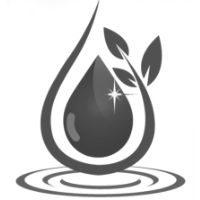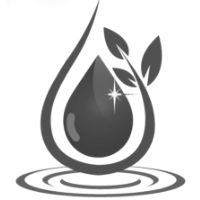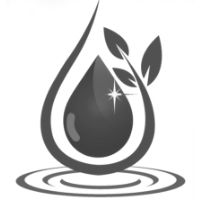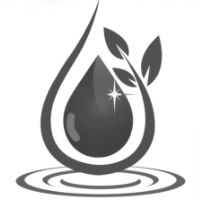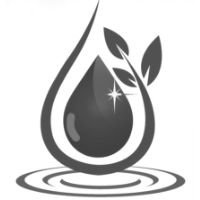Let's face it. You're going to have hair loss problems at some point in your life. Luckily, you can use essential oils for hair growth! And there are studies to validate this. But before we get into it, let's learn more about hair and hair loss treatments.

Hair Growth
Hair growth is cyclic and goes through three phases:- the anagen or growth phase
- the catagen or transition phase
- the telogen or resting phase
About 90% of the hair follicles on your head are in the growth phase which lasts for two to eight years! The rest of your hair follicles, however, are in the transition phase which lasts for about two to three weeks; and the resting phase which lasts for two to four months.
In the resting phase, your hair follicle releases and sheds and a new follicle replaces it. Then the cycle repeats but this time the anagen phase gets a little shorter than before and the follicles get a smaller, shorter and thinner.
Causes of Hair Loss
It is normal for you to shed between 50 to 100 hair follicles per day. After all, you may have about 100,000 to 150,000 strands of hair on your head. Maybe even more. But when you wash your hair, you can lose up to 250 strands. And, if you're combing or brushing vigorously or using chemicals in your hair, chances are you may lose even more.
Then there're the age and genetic factors. As you get older, the rate at which your hair grows begins to slow down. And if your parents suffered from androgenetic alopecia, which is the medical term for male- and female-pattern baldness, then it's likely that you may suffer from it too. That means you may experience hair thinning, a receding hair line, and overall hair loss.
Age, genetics, brushing, and chemicals aren't the only factors that contribute to hair loss. There are other things too like stress, abnormal hormone levels, low-protein intake, trauma, medication, rapid weight loss, psoriasis, and illness. And, for women, pregnancy and polycystic ovary syndrome also play a role in hair thinning and hair loss.
That's a long list for causes of hair loss! So how do we fix it?
Current Treatments for Hair Loss
There are a few products on the market (as well as medical procedures) that claim to reverse hair loss and improve hair growth. But many of them don't really work. And the ones that do will only work if you continue using the product. Figures!
Finasteride
Finasteride is a drug sold under the brand names – Proscar and Propecia. It is sold as 1mg tablets and is prescribed for daily use by men and postmenopausal women. Numerous studies have shown that 30% of men see improvement in hair loss after six months of taking the drug. And, after two years of treatment, about 66% experience improved scalp coverage. However, the treatment's effectiveness only lasts as long as the drug is taken.
There may also be side effects too. Reports suggest that while adverse effects are rare, some studies (like this one) have noted some men may experience lower libido, and erectile and ejaculatory dysfunction.
Finasteride is not recommended for younger women because it can cause birth defects in male fetuses. And, studies done on postmenopausal women have found the drug isn't as effective for women.
I should also mention that some women may experience increased libido and breast tenderness.
Minoxidil
Minoxidil is an over-the-counter drug, marketed under a number of brand names including Regaine, Rogaine, Lipogaine, EXT, etc. It is mainly sold as a mousse or liquid at concentrations of either 2% or 5% (for extra strength) and as an oral tablet. In the liquid form, it needs to be applied two times a day to a dry scalp and left for an hour before rinsing.
Minoxidil is recommended for both men and women and works by widening the blood vessels to the scalp, thereby allowing more oxygen, blood and nutrients to flow to the hair follicles. In addition, it also works by speeding up the telogen or resting phase and increasing the anagen or growing phase.
Studies have shown that 40% of men who used minoxidil saw hair regrowth after three to six months of use and, just like finasteride, it is effective as long as the product is used. Studies (including this 1990 one) have also shown that women experience similar results.
But again, there are side effects.
Eye irritation, dryness, redness and irritation of the scalp, head scratching, and unwanted hair growth in other areas are all common side effects. Less common effects include dandruff, dizziness, allergic reactions, fast heartbeat, chest pain, weight gain, and swelling.
Yikes.
Other drugs
Other drugs like cyproterone acetate (which combined with estradiol is sold as the contraceptive pill Diane-35) and spironolactone are also used to treat androgenetic alopecia in women. However, there is less literature on these drugs. Both show similar effects for preventing hair loss and thinning after six to nine months of use but the effects may not necessarily be as significant as minoxidil and finasteride.
Furthermore, the side effects are also lengthy and may include breast tenderness, menstrual irregularities, fatigue, depression, loss of libido, and more.
Essential Oils for Hair Growth
With all those side effects, it's no wonder everyone is looking for safer, DIY remedies for dealing with hair loss problems. And guess what? You can use essential oils for hair growth! Admittedly, the literature may be somewhat limited but it's a good place to start.
So let's see which essential oils you can try for hair growth.
Rosemary Essential Oil
Rosemary essential oil can be used in the treatment of hair loss and androgenetic alopecia. And this 2015 clinical study proved it.

The small, 6-month study compared the effects of rosemary oil and 2% minoxidil on 100 patients with androgenetic alopecia.
Before any treatment began, a baseline was developed for each patient using microphotography.
After three months, microphotographic assessment was repeated. At this point, no major changes were noticeable.
After six months, at the end of the study, the assessment was repeated again. This time there were significant increases in hair count for ALL patients! And patients who used rosemary oil had similar increases to those using minoxidil 2%.
That means rosemary oil was just as effective as minoxidil! And we know minoxidil is one of the more effective treatments for hair loss. But that's not all. The patients in the rosemary oil group experienced less scalp itching.
So you can definitely use rosemary essential oil for hair growth!
And if that's not enough, there's another study done in 2013 that reviewed the benefits of rosemary and its essential oil. The study noted that rosemary oil blends can be rubbed into the scalp in order to stimulate activity in the hair bulbs. This, the study pointed out, can help prevent premature baldness.
So try rosemary essential oil for hair growth!
Remember though, you should dilute rosemary oil in a carrier oil before massaging it into your scalp. A 5% rosemary essential oil mix (which is about 5 drops in 5mL of carrier oil) should be sufficient.
Thyme, Rosemary, Lavender and Cedarwood Essential Oils
This combination has shown good clinical results as is evidenced by this 1998 study.

The study involved patients with alopecia areata (a type of spot baldness due to auto-immune disease).
The patients were split into two groups - an essential oil group and a control group. The essential oil group was given a blend containing 2 drops of thyme, 3 drops of rosemary, 3 drops of lavender and 2 drops of cedarwood essential oils in 3 mL of jojoba and 20 mL of grapeseed oils.
The patients were advised to massage the blend into their scalp for two minutes before wrapping their head with a warm towel to ensure absorption of the oils. They were also advised to leave their head wrapped overnight.
The control group was given a mix of 3 mL of jojoba oil and 20 mL of grapeseed oil only.
Visual and photographic assessments of the patients' hair were done at the beginning of the study and repeated three months later and seven months later, at the end of the study.
About 44% of patients in the essential oils group experienced significant improvement in hair growth versus 15% in the control group. And one patient in particular experienced incredible results.
The study also pointed out that the essential oils had no significant adverse effects and could be considered as a safer alternative for hair growth treatments.
Peppermint Essential Oil
There isn't clinical evidence supporting the use of peppermint essential oil for hair growth. However, there is a really interesting animal study, done in 2013, that's worth mentioning.

The study looked at the changes in hair growth due to saline, jojoba oil, 3% minioxidil and 3% peppermint essential oil on male mice. The mice were shaved and the respective compound (depending on the group) was topically applied once per day, six days a week for four weeks.
Photographs were taken at the beginning and at the end of each week of the study. Also, the animals' skin tissue were also tested.
The results showed that, by the second week, the mice in the peppermint essential oil group had faster hair growth rates than the other groups. And, by the fourth week, the peppermint group showed 92% hair growth; more than minoxidil's 55%.
The researchers also noted that peppermint essential oil induced significant increases in hair thickness, length, follicle depth and dermal thickness. These increases were higher than those for minoxidil.
Therefore, peppermint essential oil may be very useful for hair growth.
Clove Basil Essential Oil
Another animal study (from 2004) explored the effects of clove basil essential oil (Ocimum gratissimum Linn) on hair loss.
Mice were treated with the chemical, cyclophosphamide, in an effort to simulate chemotherapy-induced hair loss. Then, researchers topically administered clove basil oil to the test group.
The results found the essential oil group had enhanced levels of hair growth and the study suggested clove basil may help patients with chemotherapy-induced hair loss.
Special Mention: Tea Tree Essential Oil
Finally, a 2013 clinical study explored the effects of a multimodal minoxidil emulsion versus minoxidil alone for treating androgenic alopecia.
The minoxidil emulsion contained 5% minoxidil, 0.5% diclofenac (which is an anti-inflammatory) and 5% tea tree oil, which was used as an antimicrobial agent. The basis for using tea tree was to help eliminate bacteria and fungi that could affect hair growth and lead to hair fall.
Thirty-two men participated in this study and applied the respective mixes twice a day for 32 weeks. Interestingly, the results showed the emulsion group saw a greater increase in hair count, thickness and weight than the minoxidil-only group.
So not only can some essential oils promote hair growth, but they can also enhance the effects of current treatments for hair loss.
Amazing!
Note:
It is best to use essential oil blends with a concentration of 5% or less. More concentrated blends can lead to skin irritation and possible damage.
And, like all the mentioned studies showed, using essential oils for hair growth requires daily application, consistency and time. There really isn't a quick fix for faster hair growth!
Get these essential oils:
